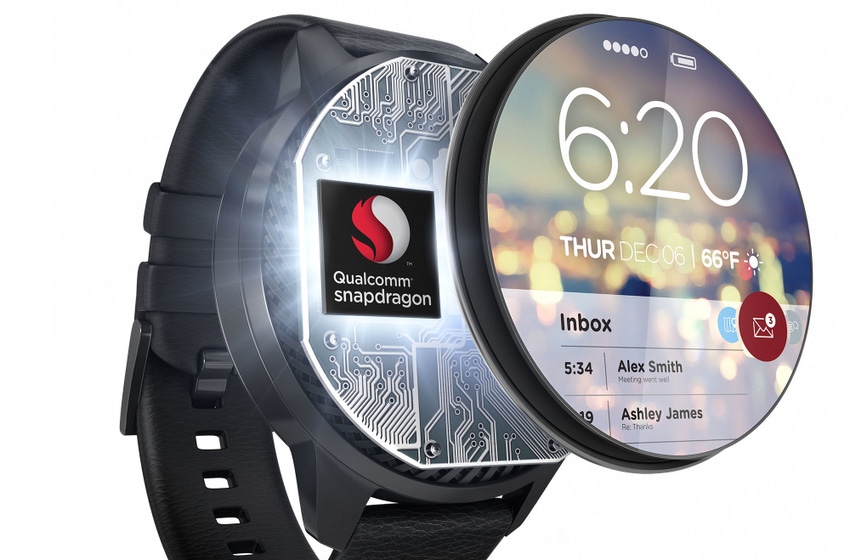Mobile chip giant Qualcomm has been saving up for MWC, adding a new wearables platform and a 1 Gbps LTE chip to its range of show launches.
February 12, 2016

Mobile chip giant Qualcomm has been saving up for MWC, adding a new wearables platform and a 1 Gbps LTE chip to its range of show launches.
The new Snapdragon Wear platform is based around the Snapdragon 2100 SoC, which is the successor to the Snapdragon 400 processor that is found in many current Android Wear devices. As ever with next-generation silicon the changes are evolutionary rather than revolutionary. Among the highlights are a 30% size reduction and a 25% power reduction versus the 400 as well as an embedded modem and upgraded sensors.
“With the introduction of the Snapdragon Wear platform and Snapdragon Wear 2100 SoC, Qualcomm Technologies is well-positioned to extend its progress in wearables technology by enabling sleek designs, long battery life, smart sensing, and always- connected experiences in the next generation of wearable devices,” said Raj Talluri, SVP of product management at Qualcomm.
“We are delighted about Qualcomm Technologies’ next generation wearable plans, are planning to extend our collaboration with the new Qualcomm Snapdragon Wear 2100 processor, and look forward to launching new smartwatches and other wearable devices that bring new and innovative use cases to consumers later this year,” said David Yoon, VP of wearables at LG Electronics.
“Wearables have captured the public’s imagination, but a lack of connectivity can lead to frustration,” said Chris Penrose, SVP of IoT at A&T Mobility. “With Snapdragon Wear’s new platform, it’s clear that AT&T and Qualcomm Technologies share a vision for independently connected wearables that create a seamless experience for those who wear them.”
And then there’s the X16 LTE modem, manufactured on the 14nm process, which Qualcomm claims is the first commercially announced ‘gigabit-class’ LTE chipset, offering LTE cat-16 download speeds in excess of 1 Gbps as well as support of both LAA and LTE-U.
“Not only does the Snapdragon X16 blur the lines between wired and wireless broadband, but marks an important step toward 5G as we enable deeper unlicensed spectrum integration with LTE and more advanced MIMO techniques to support growing data consumption and deliver an even faster and smoother user experience.” said Cristiano Amon, EVP of Qualcomm.
About the Author(s)
You May Also Like








.png?width=300&auto=webp&quality=80&disable=upscale)


_1.jpg?width=300&auto=webp&quality=80&disable=upscale)


.png?width=800&auto=webp&quality=80&disable=upscale)